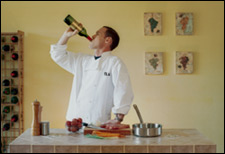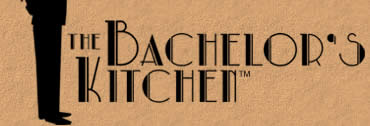Wine I can't stand water because of the things fish do in it.
-WC Fields
 My God, where do I start? Nowhere will you find a way that is more socially acceptable to get schnockered....all the while waxing eloquently on the wine's "bouquet". The really cool thing about wine is that the poorer you are, actually the more educated you'll become if you're motivated to learn....because you'll have to learn about value in wine versus just throwing money at bottles. Unless you're poor because you're plain stupid. My God, where do I start? Nowhere will you find a way that is more socially acceptable to get schnockered....all the while waxing eloquently on the wine's "bouquet". The really cool thing about wine is that the poorer you are, actually the more educated you'll become if you're motivated to learn....because you'll have to learn about value in wine versus just throwing money at bottles. Unless you're poor because you're plain stupid.
Entire books, magazines, encyclopedias, and newsletters are constantly being written on the subject of wine, so there's only so much I can cover here. For a more in depth discussion on wine, look for the resources I mention below. Here, I'll give a basic overview and a place for you to start down your own little drunken path. I'll cover the Fundamentals of Wine, Tools of the Trade, and Wine Pairing.
A. Fundamentals of Wine The Basics Wine, to start, is generally accepted as a fermented drink of the juice of grapes. Although other fruits have been used to claim themselves as wine, we'll stick to the traditional definition here. Why care about wine? Because wine is a perfect partner for food and there is a strong suggestion that there are substantial health benefits to drinking wine in moderation. Many things will determine the flavor and quality of wine, to include: - type of grape(s) used
- soil in which the grape is grown
- general climate of the region, including rainfall
- particular climate conditions for the year the grapes were harvested
- fermentation process
- aging process
- storage
So, if the list above contributes to the quality of wine, then it probably pays to educate yourself on those very subjects. Yes, its true that you have to stay current to really know what you're talking about, but if you're educated with the fundamentals, you should always be able to make a good decision about what wine you buy. And remember, no matter what anybody else says, the ultimate judge of the wine you drink is YOU. If you happen to love a $4 bottle of crummy wine, then go with it.......not that I'll be joining you anytime soon, but knock yourself out. However, it is true that you can find all sorts of incredible wine values at prices that might surprise you. What's in a Name? There are several ways to name a bottle of wine. Sometimes wine will be labeled by the grape variety it is comprised of, such as a Cabernet, or Merlot. This is very typical of American wines. Sometimes it is named by the Region, or simply by the Vinyard or Chateau that produces it, such as Burgundy, Opus One, Chateau Latour, or Penfold's Bin 128.
Grape Variety. Learn about the names and characteristics of the major grape varieties first and you'll find yourself half-way there. Some popular red grapes are: Cabernet Sauvignon; Zinfandel; Merlot; Syrah; Sangiovese; Pinot Noir; Grenache; and Gamay. Some popular white grapes are: Chardonnay; Sauvignon Blanc; Semillon; and Muscat.
Region. Educate yourself on the different regions in the wine-producing world and specifically what they are known for. For instance, the Bordeaux region in France is known for its full bodied reds, while Burgundy is known for its medium bodied reds. If you were to buy a Sauternes wine, then that region typically is defined by the sweet dessert wines comprised of Semillon and Sauvignon Blanc grapes. Starting to make sense yet? Still sober? What To Buy, What To Buy......? In world-wide production, the leading countries are: Italy; France; Spain; and the good ole USA(note: I haven't even factored in Mississippi squash wine in this tally). However, don't let this dissuade you from trying wines from other smaller producing countries like Australia or New Zealand, which are quickly becoming recognized for some trememdous wines.
A little intimidated by a bottle that doesn't scream on the outside what it is? Well, don't be fooled by the simplicity of reading a label marked with the grape variety. If I read a label marked "Cabernet Sauvignon", it is only a general statement about the type and quality of the wine. The reality is that you still need alot more information about the bottle, such as: - Who makes it?
- Where was it produced?
- What year were the grapes grown?
- How long ago was it bottled and what have the storage conditions been?
- How cool-looking is the label?
And for God's sakes, don't make really dumb blanket statement like, "well I like Merlot, but not Cabernet Sauvignon because I like a lighter-bodied red".....it just so happens that I've had Merlots which are much fuller bodied than some Cabs. Which brings us to........
The entire reason you try to make generalizations about wine is that you are attempting to speak a common language to better make informed wine purchases and enjoy wine. Unless, of course, you are like this one knucklehead I met that was simply trying to make a pompous jackass of himself. So, with the first point in mind, buy and review your resources that I mention below, then track down a reputable wine merchant/educated salesperson and buy a small selection of various wines you may be interested in. I recommend you get a few reds and whites in a range from light-bodied to full-bodied, a bottle or two of sparkling white and then have a little party/wine tasting with your friends. Pretty cool idea for inviting that cute redhead over, eh? Remember to serve your wines in order from white to red; young to old; from light to full bodied; and from good quality to better.
Once you've started to figure out what all those terms mean, go back to your salesperson and describe what it was you did or didn't like about each wine. You're now on your way to better honing your skills of purchasing, tasting, and enjoying wine. Be mindful, too, that the different types of wines may have to be served at different temperatures....just ask the salesperson. B. Tools of the Trade Resources The first thing you need, really, is an education. So, with that in mind, consider purchasing: - A quality book, such as Hugh Johnson's The World Atlas of Wine and Robert Parker's Wine Buyer's Guide.
- At least one copy of a current magazine or newsletter, such as Robert Parker's Wine Advocate, or the Wine Spectator.
Then, if you're really into it, buy a subscription to one of those magazines and then a vintage/purchasing guide book to keep abreast of what is best on the market. Remember, you don't have to agree with ratings, per se, but knowing a general range of ratings and What a review/taster had to say about the characteristics of the wine will help determine whether you'll like it also. Equipment There are several things you'll want to support your habit: - A good corkscrew, listed in Essential Equipment.
- Bottle storage system, to keep an opened bottle from turning into vinegar. Vac-u-vin makes a great system, although there are plenty good quality systems out there.
- Crystal wine glasses. You should start with a basic set of a couple of glasses and work up from there as you need them. Crystal wine glasses will cost you from about $8/stem up to $60/stem or more. Look at Riedel's Vinum collection or, for more value-minded folks, check out Spiegelau's Vino Grande collection.
- A crystal decanter. This you'll use for decanting older bottles of wine that require some breathing. Same companies above sell decanters.
C. Wine Pairing Now, I'll make the disclaimer that although there are some axioms to use as a guide to pair wine, don't be bound by it at all....feel free to drink whatever you want with your meal. Use this pairing guide as just that.....a guide and a place to start. The more you learn by tasting and pairing yourself, the more comfortable you'll be picking out the bottle to accompany your meal.....or even picking out a meal to accompany a great bottle of wine. By the way, if you try something as incredibly stupid as pairing your wine with your date....you know, light white with a blonde, full-bodied red with a chubby brunette.....you are just headed for disaster, my friend. Reds
I happen to like pairing heavier reds with red meat, like beef, and lighter reds with dark poultry, like duck, and pasta. Yes, light red wine is awesome with pizza. There, don't you feel better now? Whites
Whites are great when you feel like drinking something cool and refreshing and they typically go great with fish, shellfish, poultry, pork, most pasta, and any delicately flavored dish. Dessert
Champagne, sweet dessert wine, ice wine, port, and cognac are all great choices for drinking with dessert......but again, don't be bound by it. I love a great Bordeaux with anything chocolate. Better yet, consider the wine itself as dessert. Wine as a Gift
As always, a disclaimer: don't be bound by anything other than ensuring you give a decent bottle as a gift and always consider asking the host if there is something they would like for you to pick out. My general rule of thumb is this: if it's for a quiet dinner, I like to bring a quality bottle of red. If it is for a party, then I bring a chilled bottle of white or a bottle of champagne. Champagne is perfect for any celebration, too.
Expect that the red for a dinner may not be opened.......the dinner most likely is planned with a specific wine choice already. Conversely, I often expect a chilled bottle of white or champagne to be opened for a party where hors d'oevres are being served as it will more than likely be a welcome addition to a wide selection of food and a larger crowd. Final Thought
For some additional information on wine pairing and wine, here is a great
article that you can read in just a few short minutes written by Harvey Steiman of the Wine Spectator.
|


